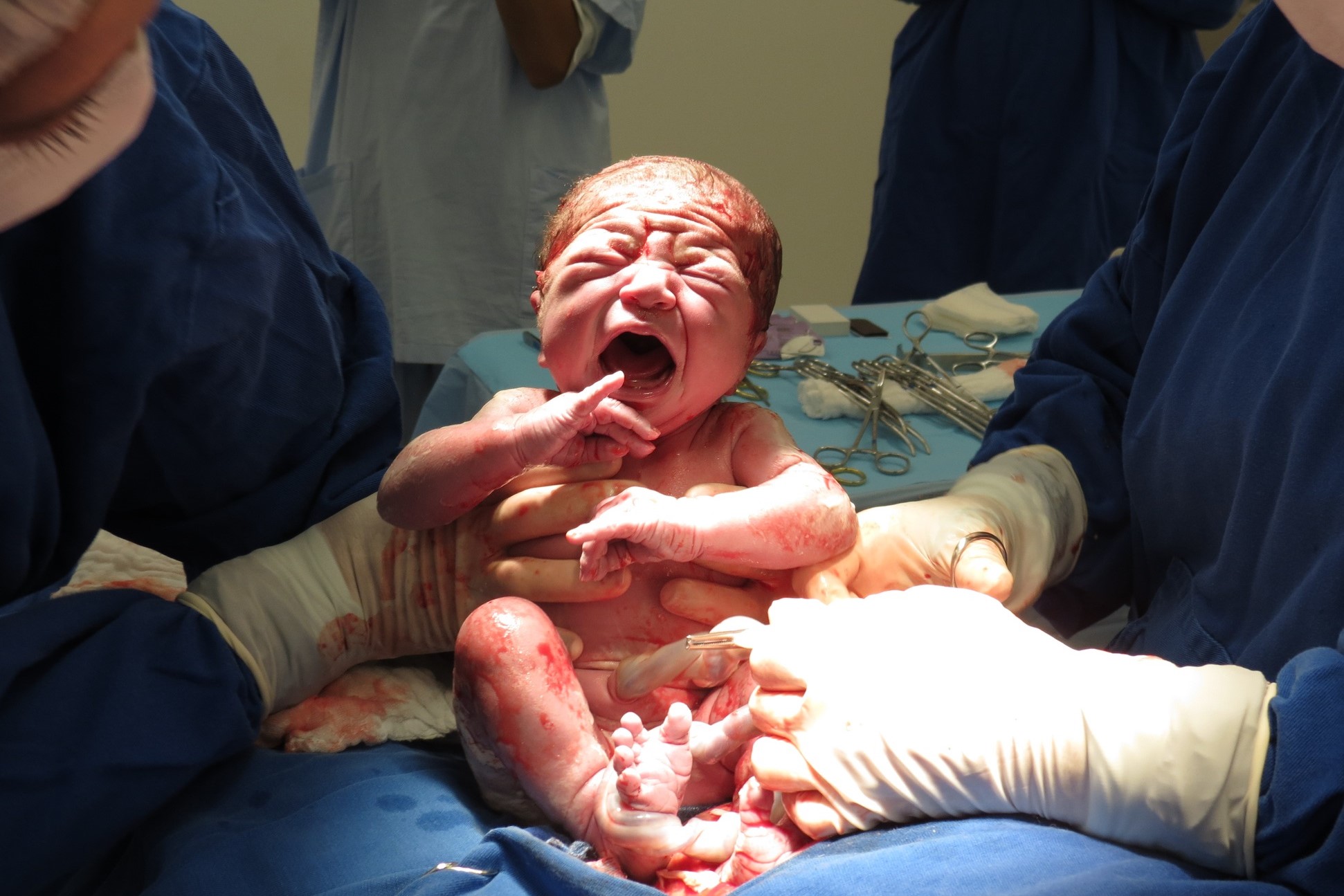
Transient tachypnoea of the newborn: overview of neonatal wet lung syndrome
Transient tachypnoea of the newborn (also called ‘transient neonatal tachypnoea’ or ‘neonatal wet lung syndrome’) is a respiratory disorder of the newborn caused by delayed reabsorption of fetal lung fluid that can lead to transient respiratory distress and, in severe cases, death of the newborn due to respiratory failure
The incidence of transient tachypnoea in the neonate is about 1%
Transient tachypnoea of the neonate is caused by a delay in reabsorption of fetal lung fluid.
Pathophysiology of transient tachypnoea of the neonate (neonatal wet lung syndrome)
The delay in reabsorption of lung fluid is partly determined by the immaturity of the Na (sodium) channels in the lung epithelial cells: these channels are responsible for the uptake of Na (and thus water) from the alveoli and – if they are immature – may not be able to perform this task and result in poor reabsorption of the foetal lung fluid.
CHILD HEALTH: LEARN MORE ABOUT MEDICHILD BY VISITING THE BOOTH AT EMERGENCY EXPO
Risk factors for transient tachypnoea in the newborn are:
- premature birth
- gestational age of 28 weeks or less;
- low birth weight (less than 1500 grams, i.e. 1.5 kg)
- male gender;
- neonates with respiratory depression and delayed fetal lung fluid clearance;
- low growth parameters in newborns (length, weight and head circumference);
- low Apgar index;
- macrosomia;
- bronchial asthma;
- diabetic father;
- diabetic mother;
- mother malnourished by default
- mother with multiple pregnancies;
- mother who abuses alcohol and/or takes drugs;
- persistent pulmonary hypertension;
- term babies delivered by elective caesarean section without labour;
- siblings born prematurely and/or with transient tachypnoea of the newborn and/or with cardiac malformations.
The symptoms and signs of transient tachypnoea of the newborn are
- tachypnoea (rapid breathing);
- cyanosis (bluish colour of the skin);
- dyspnoea (difficulty breathing);
- grunting;
- enlargement of the nasal fins (dilation of the nostrils);
- intracostal and subcostal retractions;
- noisy breathing.
Diagnosis
The diagnosis of transient tachypnoea in the newborn is suspected on objective examination if there are signs of respiratory distress shortly after birth.
The diagnosis of certainty is reached by a chest X-ray, which shows overexpanded lungs with reinforcement of the perilymph pattern, a hirsute appearance of the cardiac margins, a clear pulmonary periphery and fluid in the pulmonary scissors.
CBC, blood cultures and haemogasanalysis (showing hypoxaemia) may also be performed.
Differential diagnosis
The differential diagnosis arises in relation to other conditions that lead to neonatal respiratory distress, such as meconium aspiration syndrome.
The latter, however, tends to occur in the case of post-term delivery (gestation of more than 40 weeks) whereas, as we have seen, transient tachypnoea of the new-born tends to occur mainly in the case of pre-term delivery.
The differential diagnosis also arises with regard to pneumonia, neonatal respiratory distress syndrome and sepsis.
The treatment of transient neonatal tachypnoea consists mainly of oxygen therapy (administration of oxygen) with a stretcher, with the baby under close observation
Rarely, very premature infants and/or those with neurological depression at birth or other respiratory problems (e.g. congenital airway malformation respiratory distress syndrome) require continuous positive pressure ventilation.
Only in the most severe cases should the infant be intubated and mechanical ventilation be performed.
If the initial results are indeterminate or there are signs indicating a bacterial infection, antibiotics (e.g. ampicillin and gentamicin) are administered to the infant while waiting for culture results to arrive from the laboratory.
Duration
In most cases, if the medical intervention was rapid and the baby reacted well to the O2 therapy, a few days after birth (usually 2 – 4 days) the respiratory situation usually normalises without any sequelae.
The prognosis of transient tachypnoea in the newborn is generally good
Factors that may increase the severity and worsen the prognosis are:
- very premature birth
- gestational age less than 28 weeks;
- low birth weight (less than 1500 grams, i.e. 1.5 kg);
- untimely intervention by medical personnel;
- low Apgar index;
- respiratory distress syndrome;
- sepsis;
- pneumonia;
- damage to the nervous system;
- endocranial complications related to hypoxaemia, hypercapnia, hypotension, blood pressure fluctuations and low cerebral perfusion;
- endocranial haemorrhage;
- presence of other congenital or acquired pulmonary diseases, e.g:
- airway malformations,
- persistent pulmonary hypertension,
- pulmonary agenesis,
- meconium aspiration syndrome,
- pulmonary hypoplasia,
- pulmonary aplasia,
- broncho-pulmonary dysplasia,
- hypertensive pneumothorax;
- presence of other congenital systemic diseases (e.g. cardiac malformations, typically a pervious Botallo’s duct).
Transient tachypnoea of the newborn has a mortality of approximately 1 – 2%
If respiratory distress syndrome occurs, even with timely medical intervention, the mortality rate rises to about 9 – 10%.
Death usually occurs mainly during the first period of oxygen administration.
Death occurs due to acute respiratory failure.
Read Also:
Emergency Live Even More…Live: Download The New Free App Of Your Newspaper For IOS And Android
What Is Transient Tachypnoea Of The Newborn, Or Neonatal Wet Lung Syndrome?
Tachypnoea: Meaning And Pathologies Associated With Increased Frequency Of Respiratory Acts
Obstructive Sleep Apnoea: What It Is And How To Treat It
Obstructive Sleep Apnoea: Symptoms And Treatment For Obstructive Sleep Apnoea
Our respiratory system: a virtual tour inside our body
Tracheostomy during intubation in COVID-19 patients: a survey on current clinical practice
FDA approves Recarbio to treat hospital-acquired and ventilator-associated bacterial pneumonia
Clinical Review: Acute Respiratory Distress Syndrome
Stress And Distress During Pregnancy: How To Protect Both Mother And Child
Respiratory Distress: What Are The Signs Of Respiratory Distress In Newborns?


